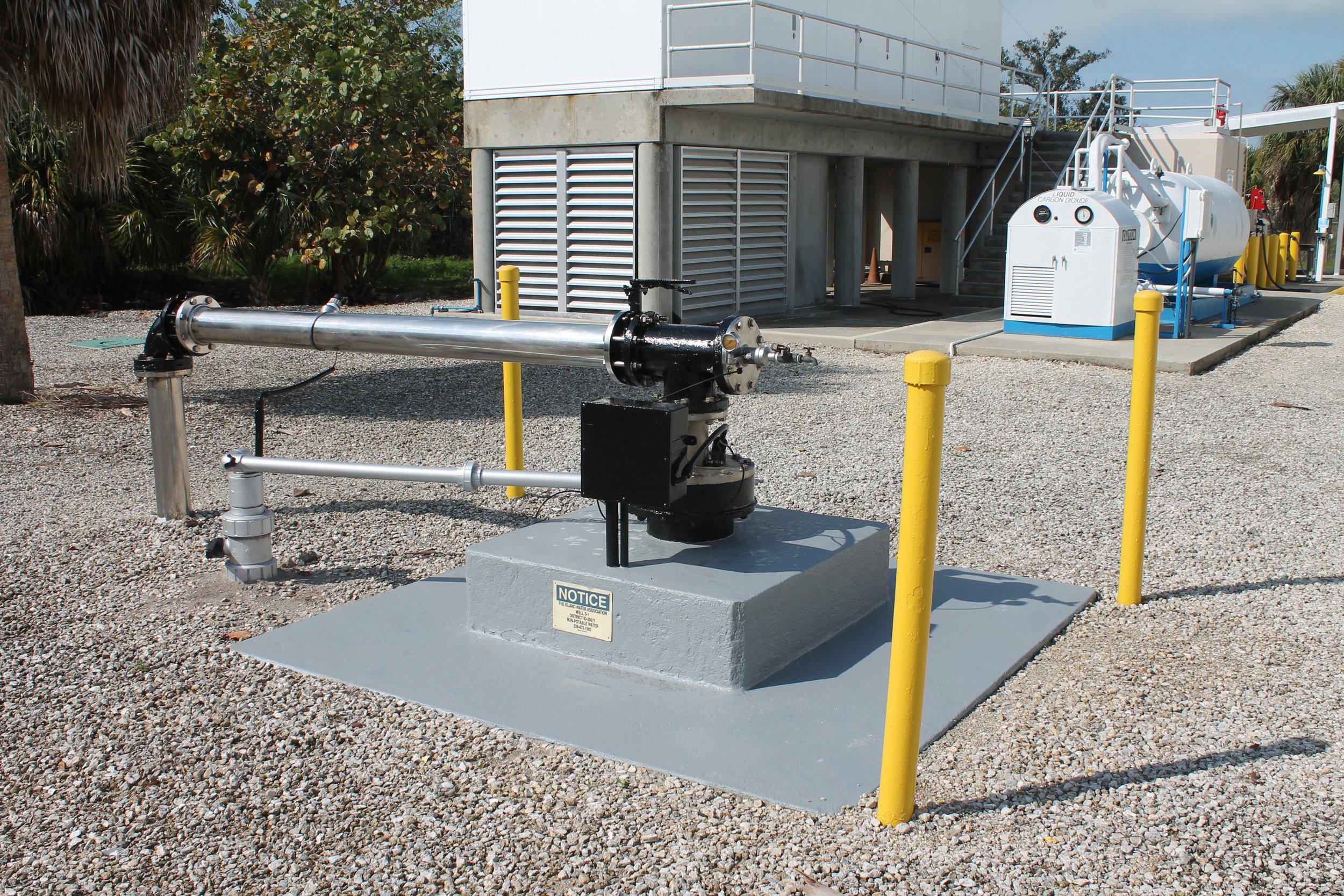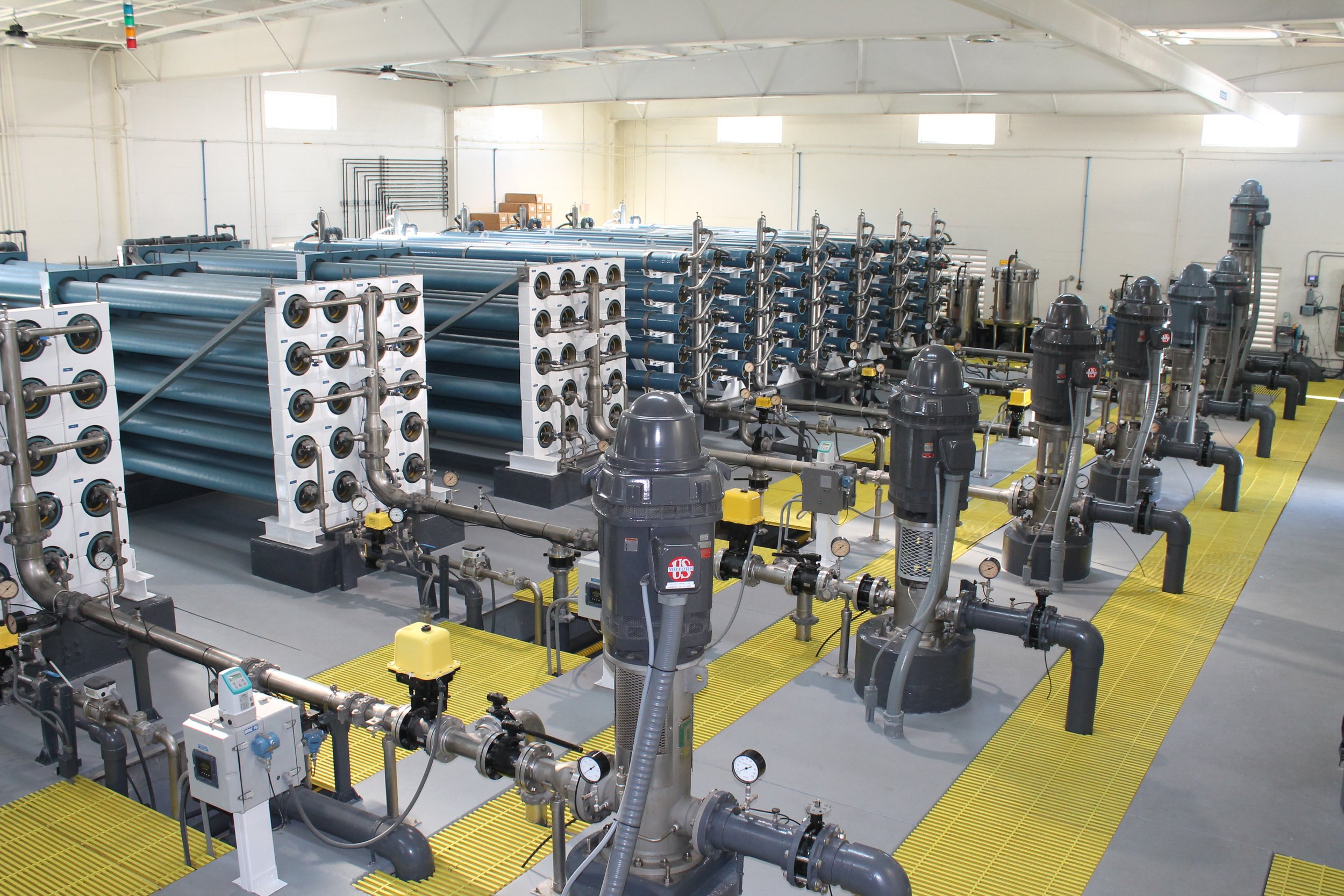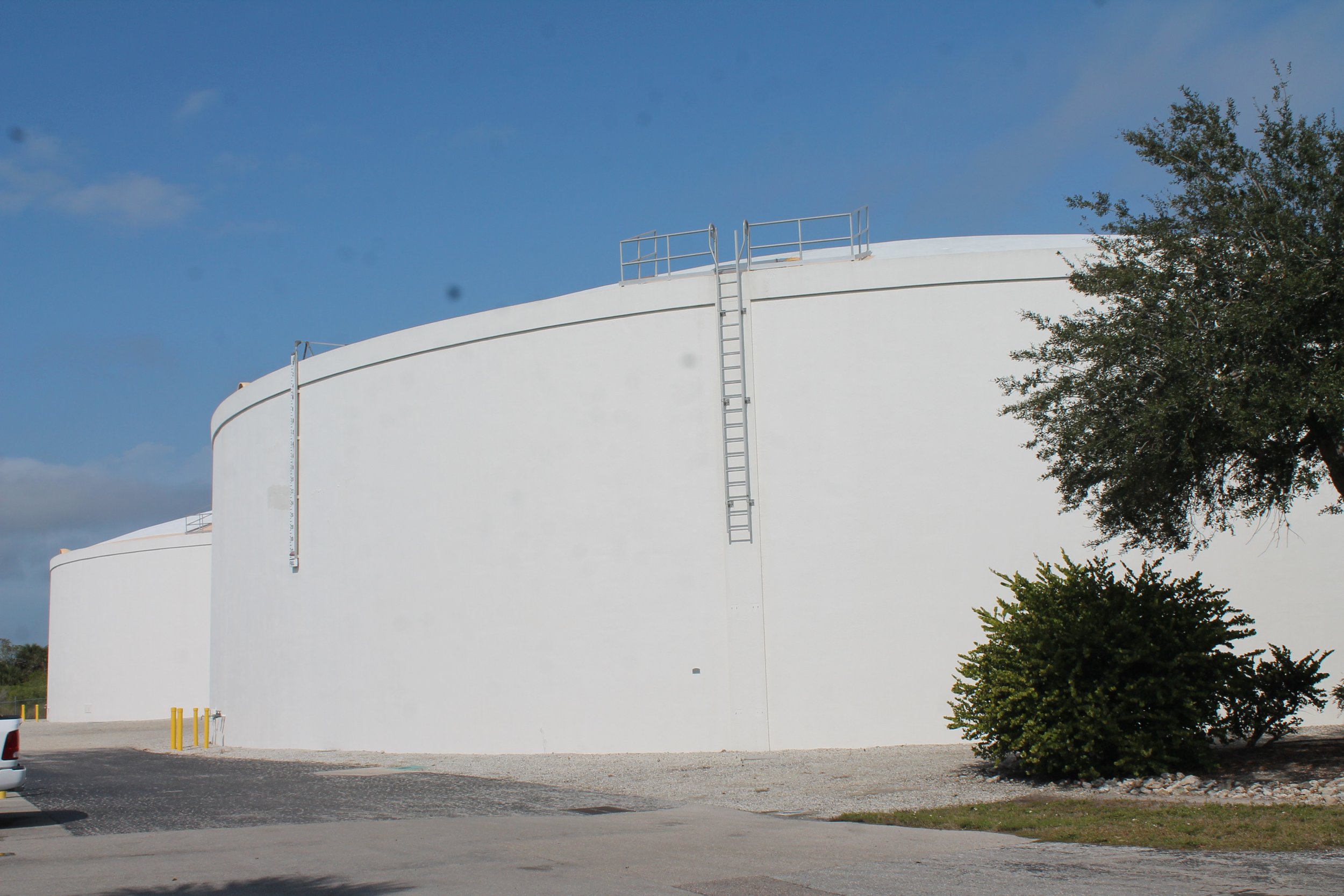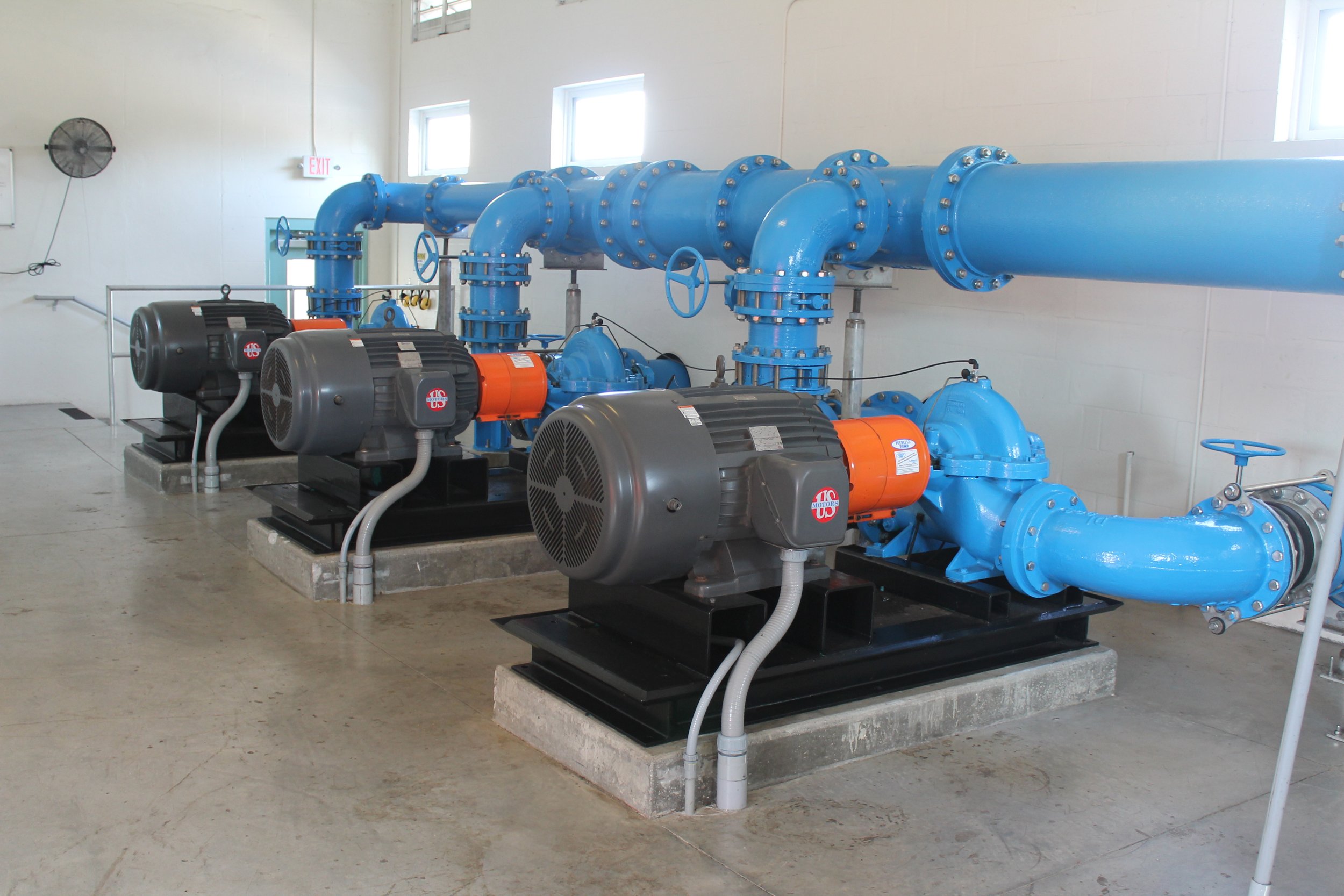Drinking Water on the Islands
Scroll down to learn how IWA treats and delivers potable water to Sanibel and Captiva.
It starts at the wellfield
IWA utilizes 15 production wells that extract raw water from the Suwanee and Hawthorne aquifers. The wells, which range in depth from 500 to 900 feet, produce a brackish water that must be treated to become potable and wholesome for consumption.
Pre-treatment begins
Raw water collected from the wellfield enters cartridge filtration units which remove sands and silts greater than one-micron in size. After this process, the raw water is considered pre-treated feed water, and ready for the next stage of the treatment process.
Reverse osmosis
Although large particles of sand and silt are removed in pre-treatment, the feed water remains brackish, containing naturally high levels of salt and minerals. A reverse osmosis (R.O.) process is used to separate fresh water from the salts, minerals, and various contaminants in the raw water. IWA uses six separate sets of R.O. vessels (known as trains), which use high pressure pumps to push brackish water through semi-permeable membranes. The membranes allow water molecules to pass into a collection stream, while rejecting salts, minerals, viruses, and other contaminants into a separate waste stream that is disposed of through a deep injection well.
The freshwater collection stream is mixed with chlorine for disinfection and to remove naturally occurring hydrogen sulfide. Sodium hydroxide and corrosion inhibitor are added to the finished water for pH adjustment and to prevent copper, commonly found in interior home plumbing, from leaching into the potable water.
Deep injection well
The waste stream produced from the RO treatment process is hypersaline and not suitable for irrigation. To dispose of the hypersaline water, it is injected back into the earth through IWA’s deep injection well. The depth of the injection well is 3,200 feet, far below our drinking water aquifers.
Storage across islands
Finished water from the treatment process is distributed to five separate and strategically located storage tanks throughout Sanibel and Captiva. In total, fifteen million gallons of finished, potable water is stored and available to serve domestic, irrigation, and fire service demands.
Getting to our members
Stored water is pressurized and distributed through IWA’s water main network using high service pumps at the treatment facility, and three additional booster pump stations located adjacent to the storage tanks. In the event of a power disruption, a diesel-powered generator will automatically start to maintain adequate water pressure throughout the system.






